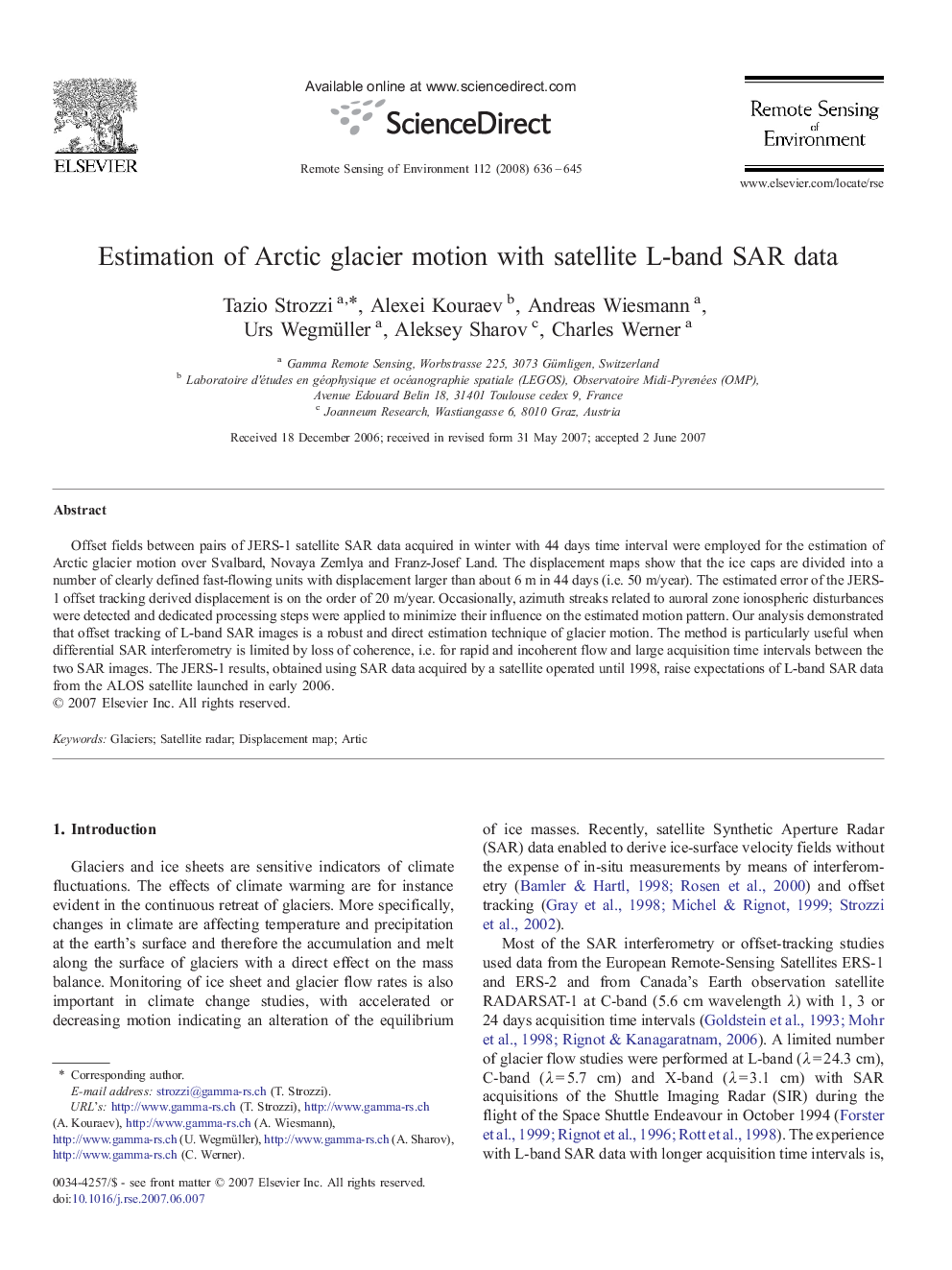| Article ID | Journal | Published Year | Pages | File Type |
|---|---|---|---|---|
| 4460438 | Remote Sensing of Environment | 2008 | 10 Pages |
Offset fields between pairs of JERS-1 satellite SAR data acquired in winter with 44 days time interval were employed for the estimation of Arctic glacier motion over Svalbard, Novaya Zemlya and Franz-Josef Land. The displacement maps show that the ice caps are divided into a number of clearly defined fast-flowing units with displacement larger than about 6 m in 44 days (i.e. 50 m/year). The estimated error of the JERS-1 offset tracking derived displacement is on the order of 20 m/year. Occasionally, azimuth streaks related to auroral zone ionospheric disturbances were detected and dedicated processing steps were applied to minimize their influence on the estimated motion pattern. Our analysis demonstrated that offset tracking of L-band SAR images is a robust and direct estimation technique of glacier motion. The method is particularly useful when differential SAR interferometry is limited by loss of coherence, i.e. for rapid and incoherent flow and large acquisition time intervals between the two SAR images. The JERS-1 results, obtained using SAR data acquired by a satellite operated until 1998, raise expectations of L-band SAR data from the ALOS satellite launched in early 2006.
